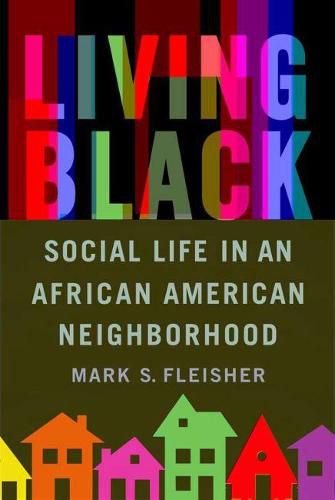Readings Newsletter
Become a Readings Member to make your shopping experience even easier.
Sign in or sign up for free!
You’re not far away from qualifying for FREE standard shipping within Australia
You’ve qualified for FREE standard shipping within Australia
The cart is loading…






This title is printed to order. This book may have been self-published. If so, we cannot guarantee the quality of the content. In the main most books will have gone through the editing process however some may not. We therefore suggest that you be aware of this before ordering this book. If in doubt check either the author or publisher’s details as we are unable to accept any returns unless they are faulty. Please contact us if you have any questions.
Living Black breaks the stereotype of poor African American neighborhoods as dysfunctional ghettos of helpless and hopeless peopleDespite real poverty, the community described in Living Black-the historic North End of Champaign, Illinois-is truly a neighborhood, with a vibrant social life, wide-ranging friendships, and strong ties between youth and adults and among multiple generations of community residents, lending a hand to neighbors in need. But it operates on its own terms-valuing nonjudgmental attitudes and individualism, and stressing acceptance of the consequences of personal behavior. Teenage mothers aren’t derided, adolescents who drop out of school aren’t ridiculed, and parolees and ex-cons aren’t scorned.
The North End was settled in the late nineteenth century by descendants of slaves who were seeking employment at the local university. Anthropologist Mark Fleisher offers a window into its daily life at the end of the twentieth century, particularly through the stories of Mo and Memphis Washington, who fight to sustain a stable home for their children, and of Burpee, a local man who has returned to the North End to rebuild his life after years of crime and punishment in Chicago.
Living Black is based on six years of Fleisher’s firsthand participant observation in the North End. Earlier studies of the North End, conducted by black graduate students at the University of Illinois in the 1930s and 1960s, indicate that the community Fleisher found in the 1990s carried forward out of slavery a culture of resilience, intergenerational social and economic support, an ability to cope with and adjust to conditions of privation, and a climate of positive interracial relationships between the North End’s black residents and the predominantly white university community and local law enforcement agencies.
$9.00 standard shipping within Australia
FREE standard shipping within Australia for orders over $100.00
Express & International shipping calculated at checkout
This title is printed to order. This book may have been self-published. If so, we cannot guarantee the quality of the content. In the main most books will have gone through the editing process however some may not. We therefore suggest that you be aware of this before ordering this book. If in doubt check either the author or publisher’s details as we are unable to accept any returns unless they are faulty. Please contact us if you have any questions.
Living Black breaks the stereotype of poor African American neighborhoods as dysfunctional ghettos of helpless and hopeless peopleDespite real poverty, the community described in Living Black-the historic North End of Champaign, Illinois-is truly a neighborhood, with a vibrant social life, wide-ranging friendships, and strong ties between youth and adults and among multiple generations of community residents, lending a hand to neighbors in need. But it operates on its own terms-valuing nonjudgmental attitudes and individualism, and stressing acceptance of the consequences of personal behavior. Teenage mothers aren’t derided, adolescents who drop out of school aren’t ridiculed, and parolees and ex-cons aren’t scorned.
The North End was settled in the late nineteenth century by descendants of slaves who were seeking employment at the local university. Anthropologist Mark Fleisher offers a window into its daily life at the end of the twentieth century, particularly through the stories of Mo and Memphis Washington, who fight to sustain a stable home for their children, and of Burpee, a local man who has returned to the North End to rebuild his life after years of crime and punishment in Chicago.
Living Black is based on six years of Fleisher’s firsthand participant observation in the North End. Earlier studies of the North End, conducted by black graduate students at the University of Illinois in the 1930s and 1960s, indicate that the community Fleisher found in the 1990s carried forward out of slavery a culture of resilience, intergenerational social and economic support, an ability to cope with and adjust to conditions of privation, and a climate of positive interracial relationships between the North End’s black residents and the predominantly white university community and local law enforcement agencies.